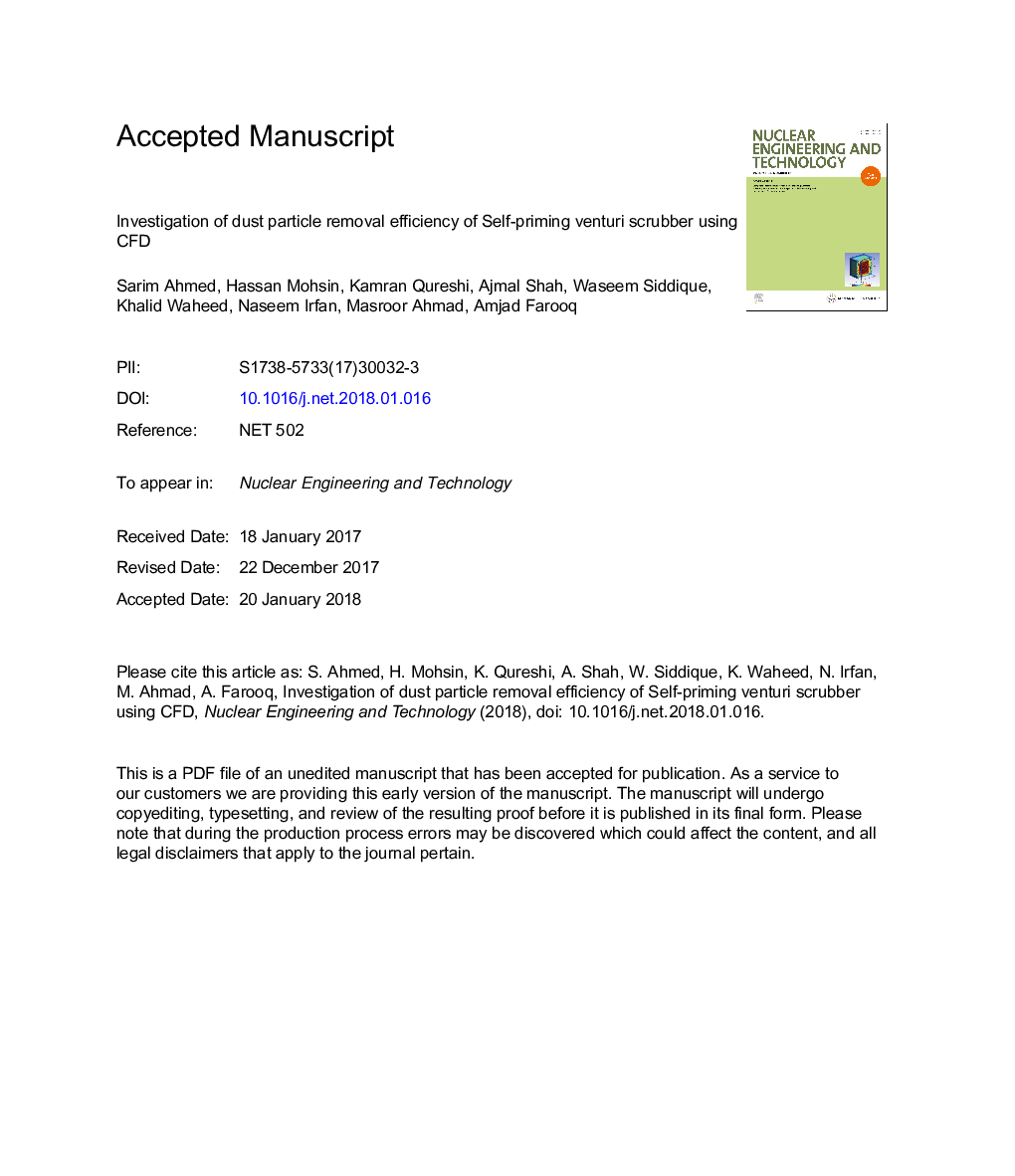| Article ID | Journal | Published Year | Pages | File Type |
|---|---|---|---|---|
| 8083679 | Nuclear Engineering and Technology | 2018 | 18 Pages |
Abstract
A venturi scrubber is an important element of Filtered Containment Venting System (FCVS) for the removal of aerosols in contaminated air. The present work involves computational fluid dynamics (CFD)Â study of dust particle removal efficiency of a venturi scrubber operating in self-priming mode using ANSYS CFX. Titanium oxide (TiO2) particles having sizes of 1 micron have been taken as dust particles. CFD methodology to simulate the venturi scrubber has been first developed. The cascade atomization and breakup (CAB)Â model has been used to predict deformation of water droplets, whereas the Eulerian-Lagrangian approach has been used to handle multiphase flow involving air, dust, and water. The developed methodology has been applied to simulate venturi scrubber geometry taken from the literature. Dust particle removal efficiency has been calculated for forced feed operation of venturi scrubber and found to be in good agreement with the results available in the literature. In the second part, venturi scrubber along with a tank has been modeled in CFX, and transient simulations have been performed to study self-priming phenomenon. Self-priming has been observed by plotting the velocity vector fields of water. Suction of water in the venturi scrubber occurred due to the difference between static pressure in the venturi scrubber and the hydrostatic pressure of water inside the tank. Dust particle removal efficiency has been calculated for inlet air velocities of 1Â m/s and 3Â m/s. It has been observed that removal efficiency is higher in case of higher inlet air velocity.
Keywords
Related Topics
Physical Sciences and Engineering
Energy
Nuclear Energy and Engineering
Authors
Sarim Ahmed, Hassan Mohsin, Kamran Qureshi, Ajmal Shah, Waseem Siddique, Khalid Waheed, Naseem Irfan, Masroor Ahmad, Amjad Farooq,
